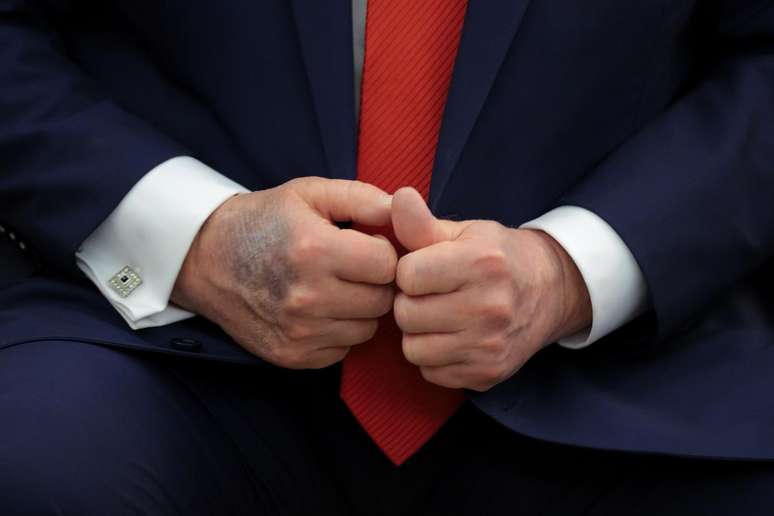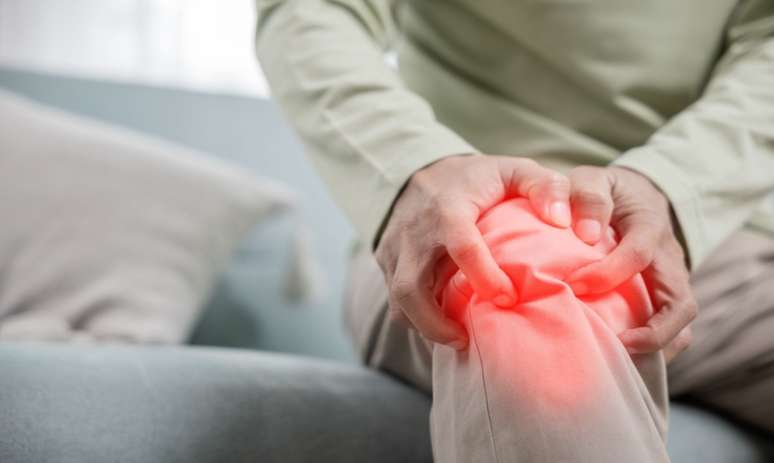According to orthopedist Gilberto Luis Camanho, the biggest orthopedic problem today is wear and tear on the knee. “There’s a big gap,” she says
It is not difficult to find studies that link an individual’s quality of life with the practice of sport or physical activity. However, its incorrect execution could be the very reason to put an end to this well-being. One of the parts of the body that most likely presents complex problems – precisely because it supports most of the body weight – is the knee.
The knee is a completely stable joint because it is a connection between two bones and depends on the surrounding musculature to function. Strengthening this muscle is essential to avoid problems related to wear, injuries and osteoarthritis. High-impact exercises, such as running and extreme sports, are the most harmful. However, those that do not overload the joint have an indirect benefit in the musculature.
According to orthopedist Gilberto Luis Camanho, people don’t take knee problems seriously. “Many people use running to lose weight and it ruins their joints,” he says.
Excess weight and a family history of knee problems are obstacle problems, or at least attention problems when choosing to run.
Before any activity, no matter what, a ten-minute warm-up is essential, as is stretching. Thus, you prepare your muscles and joints for the activity ahead.
Are marathons suitable for everyone?
Many people use running to lose weight and this is a great nonsense because it makes you lose weight, but it ruins your joints. When it comes to marathons, then, it is even worse, because it is absolutely inadvisable for those who do not have an adequate body structure. Normal people, with normal weight and structure, do it at most three times in their life, because it’s a very big effort. If they decide to run to fulfill a dream, they cause serious damage to the cartilage.
That is, there are physical and genetic conditions that favor running, but if someone wants to run a marathon, how long is it recommended to train before taking the test?
There are, of course, exceptional people, but in general, preparing for a marathon covers three aspects. The cardiorespiratory, which is the heart and lungs; the motor which are the legs and the psychic. What do you think about passing 42 km? So in my opinion at least a year for a regular runner to run a marathon.
But what about a sporadic race?
If you do something dosed 6 km, 8 km, two or three times a week, and you have the profile of a lean person, with good muscles and a good respiratory process, you will run a lot and you will pass 50 years without problems.
Second a new study conducted at the University of British Columbia, in Kelowna, Canada, knee cartilage flattens immediately after a run, but then bounces back within hours. Wouldn’t that help strengthen the knee then?
In our experience with the sports world, we see that physical activity, especially running, destroys joints. The fact that doing continuous and not too prolonged impact exercise initially increases the thickness of the cartilage, which can be seen on the radiograph. But this worsens the nutrition of the tissues, which costs more early wear of this cartilage. That is, the change in size does not mean health; it means that it has swollen and will have a loss of nutrition, which will subsequently lead to chondral lesions. It is a misinterpretation made of the literature, which is not accepted. To say that a marathon is good for you is a very little accepted thing.
What exercises can benefit the knee?
Good knee exercises are those that don’t require weight or impact. So, for example, transport, where the foot doesn’t leave the ground; skiing, one of the best for moving hands and feet in a closed circuit, and cycling, an excellent exercise for developing muscles without impacting the knee.
Is there a difference between exercises indicated for the elderly and young people?
Cartilage exists in the lower limb to cushion the load. A spectacular system, with a liquid or a gel in which the cells form a network, so it’s like a shield that absorbs the load. The younger it is, the greater the amount of liquid and the better the load-absorbing function. Over the years, our ability to hold this water in the body has been lost, it can be clearly seen in the skin. In the younger stage, running is great exercise. But as the years go by, above 40, and especially women as they enter menopause, there is a time when the cartilage loses its ability to absorb the load.
If I have a family history of knee problems, is there a way to preserve them?
There is a genetic component, no doubt, not just in the knees, but in all joints. So if there’s a familial tendency to have early knee wear, there’s the impact part. Bikes, transport, water exercises because this means that the cartilage is less able to absorb the load.
Other exercises, such as a football weekenda wake, can they also have a strong impact or, being occasional, don’t they need so many worries?
Exercises, in general, are very healthy as long as they are dosed, especially for the cardiorespiratory system, because you don’t need to have good articulation and die. Walking is always good exercise and much more interesting than running. There you will have time to transfer cargo. That is, take a step, step with the heel, transfer to the knee, knee to hip, and so on.
What is the biggest concern of doctors today in relation to knees?
We live much longer nowadays. We first saw a 60-year-old lady sitting in a chair knitting. Today there are tests for sixty-year-olds. People have gone too far, and there was no time, phylogenetically, for joints to adjust to that. So early osteoarthritis is a symbol of progression. There is a very large gap between the evolution of physical activity and the possibility of monitoring cartilage, which specifically spends more. Bone also suffers, but less than cartilage.
What are the warning signs that the knee is unwell?
Joints cannot swell or warm up. It’s an important signal. But in general, if you have pain after physical activity, that is, limiting pain, which makes you limp, it was not done correctly. Or when you have pain while exercising.
Source: Terra
Ben Stock is a lifestyle journalist and author at Gossipify. He writes about topics such as health, wellness, travel, food and home decor. He provides practical advice and inspiration to improve well-being, keeps readers up to date with latest lifestyle news and trends, known for his engaging writing style, in-depth analysis and unique perspectives.








